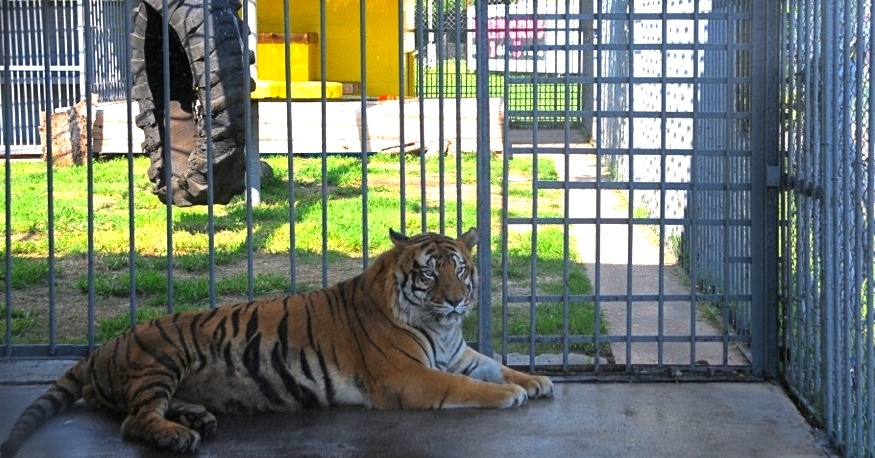
Photos by Amy Lombard. Wardrobe Courtesy of New York Vintage
Editor's note: Don't smoke any of this at home, folks—or anywhere else for that matter. Leave this stupidity to the professionals.
Disclaimer: New York's sexiest drug princess would only let me watch her smoke weird shit if she could approve the final article. Below is the text approved by New York's sexiest drug princess.
“I have enough paraphernalia to smoke anything in Manhattan.”
I’m sitting on a black couch in a bourgey apartment in Greenwich Village watching CrackDoubt, a cam girl I met at the Outback Steakhouse, smoke weird objects to see if she can get high on life. For the photos, CrackDoubt alternates between a few black couture dresses as Corinthian columns stand firm against the living-room walls and white curtains billow throughout the perimeter of the room. The apartment looks more like the set of a post–Tommy Mottola Mariah Carey music video than the place where a self-proclaimed “drug princess” might smoke objects like powdered caffeine and cash money.

The apartment’s tenant, a net artist from the art collective Art404, sits on the window sill, smoking a cigarette and staring at the Empire State Building. He encourages Amy and me to “never date in 3-D.” CrackDoubt agrees. “If you’re not on a cam site, [it costs] $2.99 a minute, my dude,” she says. “Sex work made me realize how valuable my time is.”
CrackDoubt flaunts her sex work but is touchy about her current and past drug habits. Although she has smoked crack once or twice and a crackhead recently stalked her in Grand Central Station, tweeting at her to ask whether she had any crack, she despises the terms “crackhead” and “drug addict.” Lest she be lumped in with the stigmas that these terms bring to mind, she asks me to call her a “drug princess.” “Drug duchess” and “drug mistress” are also acceptable. “I’m a heroine—with an e,” she says. “I’m a New York City drug fairy tale!”

CrackDoubt tells me that she started using drugs when she was 18. From age 20 to 25, she dealt with a heavy cocaine problem. “Cocaine brings out the ugliest side of people,” she says. She also tells me that she is now sober; however, when I point out that she tweets regularly about substances, she admits she has a unique definition of sobriety: “I’m far from clean, but I don’t wake up with withdrawls.” She worries about being labeled a drug addict because of her “fans” on Twitter who may think she glamorizes drug use. I’m not sure who these fans are (CrackDoubt has 3,324 Twitter followers), but one fan recently told her that she wasn’t really living her life if she didn’t die this year. (CrackDoubt is 27.)
CrackDoubt’s life seems to revolve around the internet, where she met the net artist. “He put me on his ‘artist Twitter list,’ which is a great honor, because what have I created?” she says. She also met her “stylist,” Lil Snow Crash, online. Lil Snow Crash is a homosexual with the voice of a banshee who eats gummy bears throughout the night. He wears LeBron James–branded baggy shorts and an oversize white T-shirt. Before CrackDoubt starts smoking weird objects, she and her friends pour orange juice and champagne into glass flutes and make a toast “to the internet!”
As she puts on her earrings, she says, “I just took my Adderall, so I can focus now.” It’s smoking time.

CrackDoubt is perched on the windowsill above a black couch, asking Amy how she should pose as she smokes artificial sweetener out of a bowl. Like a waitress pouring champage, she pours the sweetener into a bowl. “I wish I would have brought my birth control so I could have smoked it,” she purrs. She lifts up the bowl. “I’m on Diet Coke,” she purrs. “YAAAAAAS!” Lil Snow Crash screams. “David LaChapelle!” She lights the bowl and inhales.

“My voice sounds funny,” she says. “I feel like I’m on helium.”
“Would you do it again?” I ask.
“I wouldn’t rule it out.”

CrackDoubt asks if she could smoke my Sarah Lawrence College diploma (market value approximately $200,000) as a metaphor for how drugs burned away her education. CrackDoubt studied women’s history at Douglass Residential College at Rutgers and says drugs made her stray from her interests, which she eventually rediscovered in the “private sector” when she started working as a marketer at a gay-erotica publishing company. None of this quite makes sense, of course, but what does these days?

To smoke my diploma, she tears a strip of it off and puts it in a water pipe. The moment she lights up, the apartment starts to smell like a campfire. “Your diploma smells like s'mores,” she says after she inhales. “I feel very wholesome about it, but I don’t feel more educated.”
“We’re all glamorous,” Lil Snow Crash interrupts.
“My brand is glamorous,” she says as she inhales the smoke from the burning diploma.

Putting his nickname to literal use, Lil Snow Crash pours powdered caffeine on his iPad for CrackDoubt. Using her long nails, CrackDoubt forms lines of caffeine and then scoops them into her vaporizer.

The second she starts vaping the caffeine, the apartment once again fills with a weird smell—this one less identifiable.
“[It] smells like... crack,” Lil Snow Crash says.
“I feel a little woozy,” CrackDoubt says. “I’m definitely inhaling chemicals.”
The side effects remind me of the stench that permeates the bodies and clothing of huffers. Miraculously, CrackDoubt tells me that she has never huffed so much as a Whip-It before. When she worked at Friendly’s, one of her co-workers snorted Whip-Its at work. One day he sucked one down and passed out on the ground. He woke up 30 seconds later, and by that point Friendly’s had scared CrackDoubt straight.

Ever the literary conceptualist, CrackDoubt wants to smoke her old credit card to symbolize how her drug use, at one point, literally burned through all of her finances. Standing below a glow-in-the-dark sign that said “IRL,” she brings her credit card to her mouth, lights a match, sets her card on fire, and inhales.

Instantly, the credit card’s fumes expand throughout the room. They fill everyone’s nostrils and mouth, making us all cough. For safety purposes, I back away from CrackDoubt and her burning credit card, as Amy continues shooting photos, like a war photographer.
“It tastes like burning plastic, noxious chemicals,” CrackDoubt says. “It tastes like something I wouldn’t ever want to inhale.”
“It tastes like the kind of shit they use to kill baby seals,” Lil Snow Crash says.
“It tastes like Hiroshima!” CrackDoubt screams.

Dressed like a couture Virgin Mary wearing a latex dress, CrackDoubt deepthroats kale. “I would watch myself fuck because I look so good,” she says. She then stuffs her bowl with kale and lights up. “It tastes like green juice,” she says. “I feel buzzed. [When I smoked] crack, I felt worse.”

Like many people suffering from addiction, CrackDoubt thinks about Lindsay Lohan—a lot. Drug users love to both demonize Lohan as a failure and look up to her as an iconic living symbol of addiction in America, so CrackDoubt logically wants to smoke a DVD copy of a Lohan movie—in this case the 2003 classic Disney film Freaky Friday—to see if she could literally get high on Lohan.

“It’s important to know Lindsay was [allegedly] sober during [the shooting of Freaky Friday], but we love Lindsay because she’s a real addict with real addict problems—even if Oprah was her counselor,” CrackDoubt says. (Like many people who have suffered from addiction, CrackDoubt refers to Lohan by her first name.)
At one point during the night, Amy asks CrackDoubt, “How are you gonna smoke a DVD?”
“I have my way,” she says.

Wearing a latex dress Lohan would love to wear to the Oscars, Crackdoubt balances the DVD on her bowl. She lights the bowl, and the DVD topples to the ground. This happens over and over again until CrackDoubt gives up on her dream of smoking Lohan.
“There’s no way to smoke this, which tells you about Lindsay being sober during this movie,” she says.

Along with their love of all things Lohan, drug users also love burning all their cash on drugs. In true drug-lovin’ form, CrackDoubt puts on the net artist’s Google Glass, rolls a dollar bill, brings it to her lips, lights the dollar on fire, and then starts smoking the money. “It tastes less chemical [than the diploma], but they also say $1 bills are the dirtiest things on earth,” she says. “That was a $1 bill. If I smoked $100 bills, it’d be more like my addiction.”

This isn’t CrackDoubt’s first time smoking the Bible. One time when she waited for drugs in a hotel room in New Jersey, she tore a page from the Bible to roll a joint. At the net artist’s apartment, she does the same thing. Standing against a gaudy bronze-colored mirror, she smokes a joint that was laced with the words of Christ. She says, “I’m really high off the Bible, because there’s weed in it.” Finally, CrackDoubt is high.
After she finishes smoking the Bible, she rates the objects in order of how great they are as drugs.
1.) Bible
2.) Money (“Because I felt the most powerful as I smoked it.”)
3.) Kale (“Kale was health goth.”)
4.) Diploma
5.) Caffeine
6.) Sugar (“Sugar tasted better [than caffeine], but it’s below it because [artificial sweetener] is evil. I don’t fuck with [artificial sweetener].”)
7.) Credit card
8.) Freaky Friday DVD (Disqualified for being unsmokable. Sorry, Lindsay.)
Rereading CrackDoubt’s ratings in my notebook, I remember something she told me when we first met to discuss her plan to smoke weird objects: “Smoking this stuff is just as retarded as smoking crack.”
Follow Mitchell Sunderland and Amy Lombard on Twitter.






































































